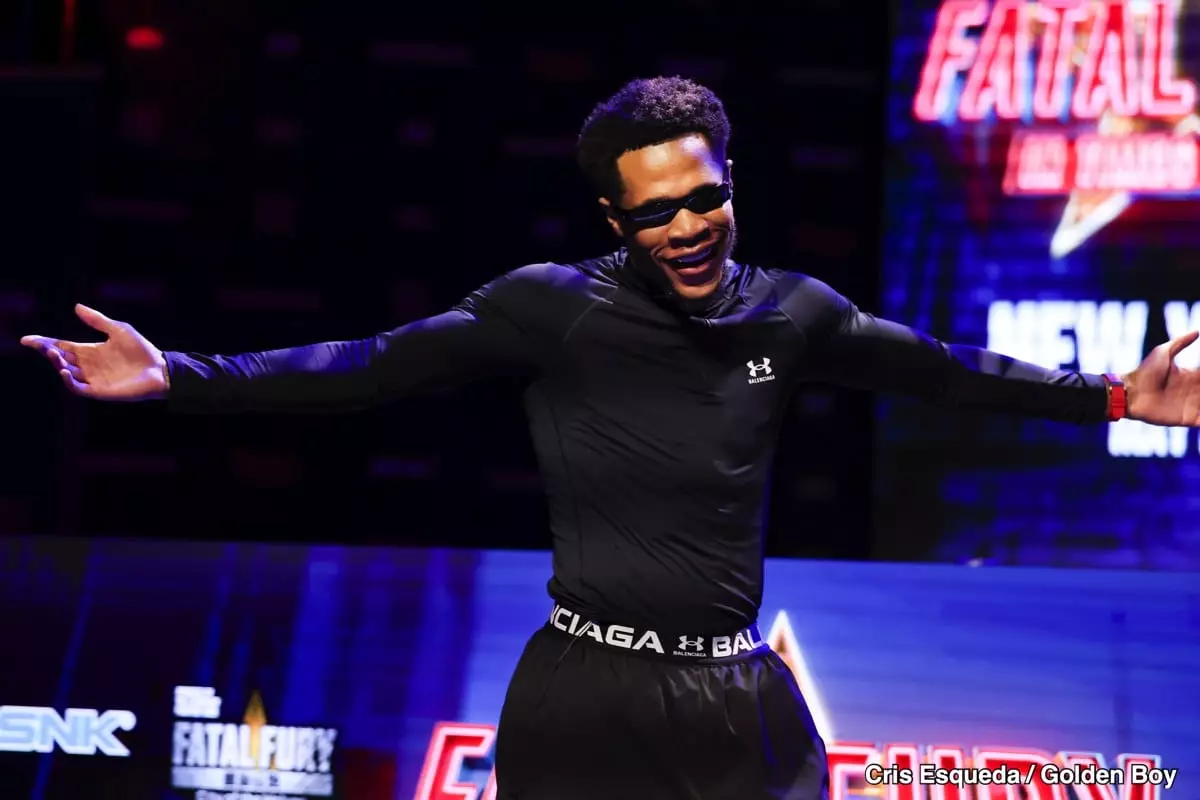In the world of sports, the dynamic between athletes and journalists can often become tenuous, particularly when sensitive subjects arise. A recent exchange at a press conference highlighted this conflict, as Bill Haney, father and coach of boxing prodigy Devin Haney, confronted ESPN’s Todd Grisham over perceived biases in questioning. While the intention was to spotlight Devin as an elite contender, the tone of the inquiries led to a public dispute that resonated with the broader theme of athlete representation in media.
Devin Haney, a formidable fighter and the youngest undisputed champion, finds himself at the center of this controversy, struggling against not just opponents in the ring but also narratives crafted by media figures. Grisham’s questioning, framed around doubts about Devin’s resilience—specifically his chin post-fight with Ryan Garcia—fueled an uncomfortable dialogue. Bill Haney’s vehement response suggests that there’s an inherent frustration with how journalists sometimes frame their narratives in ways that undermine an athlete’s accomplishments.
Media Responsibility and Sensationalism
The question posed to Jose Ramirez regarding Devin’s chin can be examined through the lens of media responsibility. Questions like these, which seem designed to provoke a reaction rather than to celebrate achievement, illustrate a trend toward sensationalism. Grisham’s query appeared to veer into an arena where performance was overshadowed by speculation—an unfortunate reality for many athletes.
However, it is essential to understand the delicate balance that sports journalists must maintain: engaging fans while providing critical commentary. Grisham’s attempted exploration of a controversial topic could be seen as an effort to delve into the realities of boxing, where physical vulnerability can lead to career-altering moments. Still, this raises the question of ethics; stark questions about an athlete’s fortitude can impact perception in ways that may not accurately reflect their abilities or accomplishments.
Fighter Appraisal: A Complex Spectrum
In the heated exchange between Bill Haney and Grisham, the preoccupation with public opinion looms large. Bill’s frustration reveals a common sentiment among athletes and their families; they want their stories told with the utmost respect for their hard work and achievements. While he emphasized Devin’s status as an undisputed champion, the pre-publicity surrounding his loss to Garcia has complicated the narrative, muddying perceptions for fans and sports commentators alike.
It prompts a reflection on whether the boxing community—a space steeped in loyalty and rivalry—has the capacity to separate an athlete’s personal struggles from their professional accomplishments. Grisham’s inquiries showcased the often petty nature of rivalries that rules the boxing landscape, pitting one viewer group against another and ultimately reinforcing hostilities. While Grisham may have intended to bring a critical edge to the interview, the underlying animosity illustrates a broader discourse about athlete criticism and public perception.
Building a More Supportive Environment
As the sports industry continues to evolve, so too must the conversations surrounding it. Bill Haney’s outburst at Grisham serves as a clarion call for a more nuanced approach to sports journalism. Celebrating athletic achievement should not come at the cost of critical analysis, nor should an athlete’s merits be overshadowed by negative stands. A recalibrated approach, one that allows for tough questions paired with recognition of achievements, can help build a culture that respects both athletes and their journeys.
Likewise, press conferences can serve as platforms for fostering healthy discourse. They can celebrate the arduous journeys athletes undertake while still addressing the inevitable challenges they face. It’s imperative that journalists merge their roles as both questioners and storytellers, ensuring they publish narratives reflective of the athlete’s multifaceted identity without succumbing to the lure of controversy alone.
In striking this balance, the boxing industry—and sports journalism at large—can find a way to uplift its athletes, ensuring their stories are not merely fodder for dramatic headlines, but legitimate testaments to their resilience, skill, and unwavering dedication.


Leave a Reply